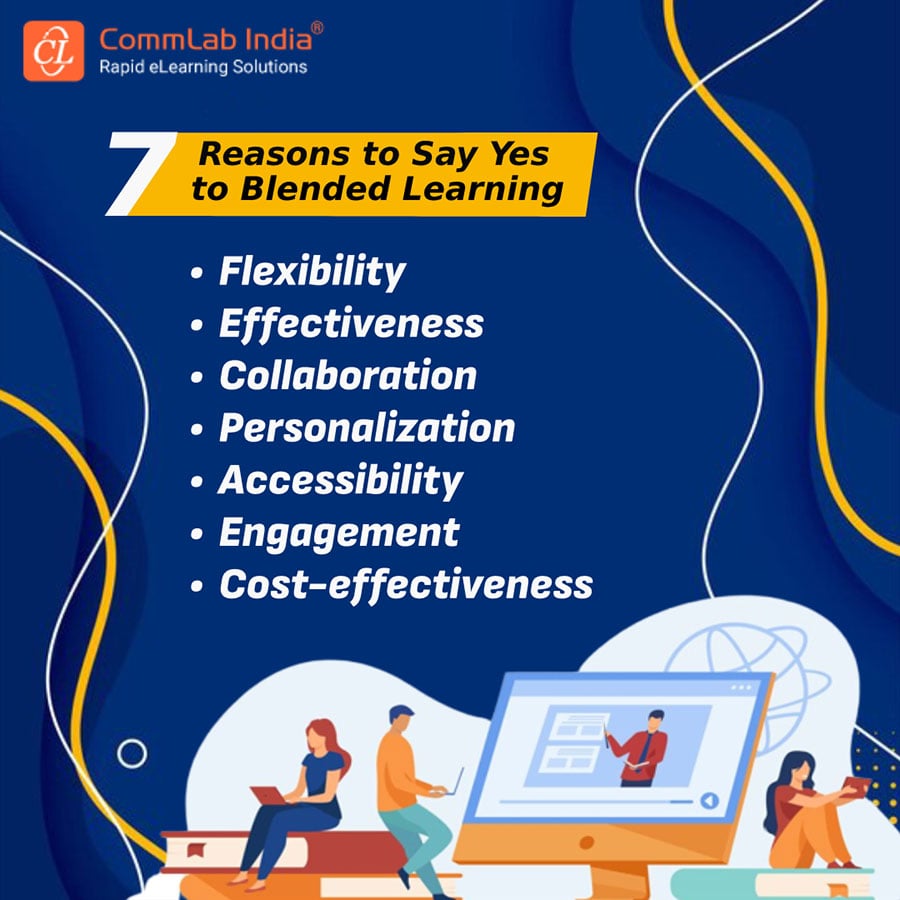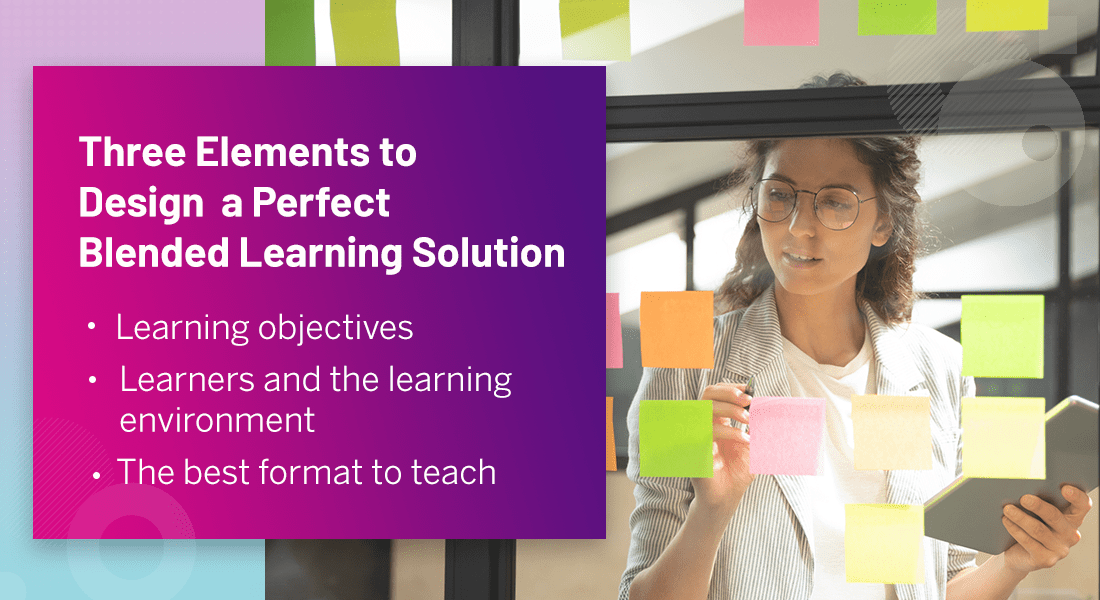Reasons to Say Yes to Blended Learning [Infographic]
![Reasons to Say Yes to Blended Learning [Infographic] Reasons to Say Yes to Blended Learning [Infographic]](https://blog.commlabindia.com/hubfs/blogs/blended-learning-benefits.jpg)
Organizations are continually seeking innovative ways to enhance learning outcomes and keep their workforce equipped with the knowledge and skills needed for success. One approach that has gained significant traction is "blended learning," a strategic combination of traditional training methods and modern digital tools. In this blog, we explore how blended learning is transforming corporate training, its benefits, implementation strategies, and reasons you should say yes to it.
Embracing Blended Learning in Corporate Training
Blended learning in corporate training involves integrating in-person training sessions with online learning modules, interactive activities, and digital resources. This approach acknowledges that employees have diverse learning preferences and adapts training methodologies accordingly. Providing a mix of instructor-led sessions and self-paced online modules such as PDFs, infographics, videos, etc. being used together for one training need and making a blend helps organizations offer a comprehensive and engaging learning experience.
Benefits of Blended Learning in Corporate Training
Flexibility
Blended learning allows employees to access training materials at their convenience, accommodating different schedules and workloads. It is very helpful for employees who cannot attend long training sessions and are always on the go.
Cost-Efficiency
Reduced travel expenses and classroom setup costs make blended learning a cost-effective alternative to traditional training methods.
Personalization
Training content can be tailored to individual employee needs, ensuring that each person receives the information most relevant to their role and skill level.
Higher Engagement
Interactive elements like quizzes, simulations, and online discussions keep employees engaged, enhancing knowledge retention.
Real-time Feedback
Online assessments provide instant feedback to learners, helping them identify strengths and areas for improvement.
→ Shop Now - Blended Learning: A Guide to Boost Employee Performance
Strategies for Implementing Blended Learning
Assess Training Needs: Identify the skills and knowledge gaps within your organization to determine which training topics are most critical.
Design Engaging Content: Create a mix of video tutorials, e-learning modules, webinars, and interactive quizzes to engage learners in various ways.
Blend Modalities Effectively: Balance in-person sessions with online components to optimize engagement and learning outcomes.
Provide Clear Guidelines: Communicate expectations, schedules, and guidelines to employees to ensure a smooth transition to blended learning.
Leverage Technology: Choose a user-friendly learning management system (LMS) to host training materials, track progress, and manage assessments.
Parting Thoughts
Blended learning has emerged as a game-changer in the realm of corporate training, combining the strengths of traditional and digital methods to create a comprehensive and effective learning experience. By offering flexibility, personalization, and engagement, organizations can empower their employees with the skills and knowledge needed to thrive in a dynamic business landscape. As technology continues to evolve, the potential for blended learning to reshape corporate training and drive organizational success is boundless. Want to know more? Here is how you can maximize training efficiencies with blended learning. Grab the eBook Now!






![Ways to Supercharge Employee Onboarding with Blended Learning [Infographic]](https://blog.commlabindia.com/hubfs/blogs/blended-learning-supercharge-employee-onboarding-info.jpg)
